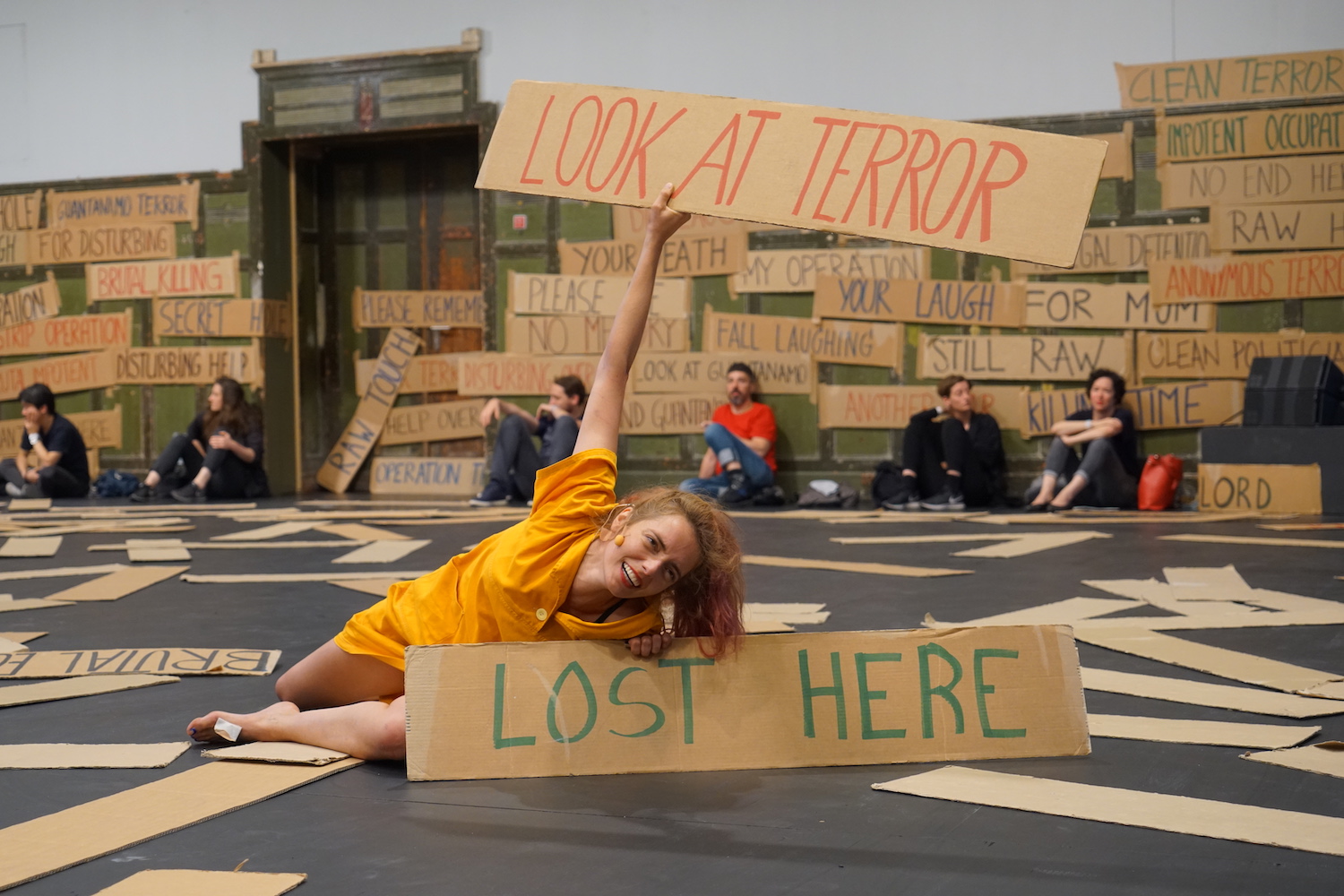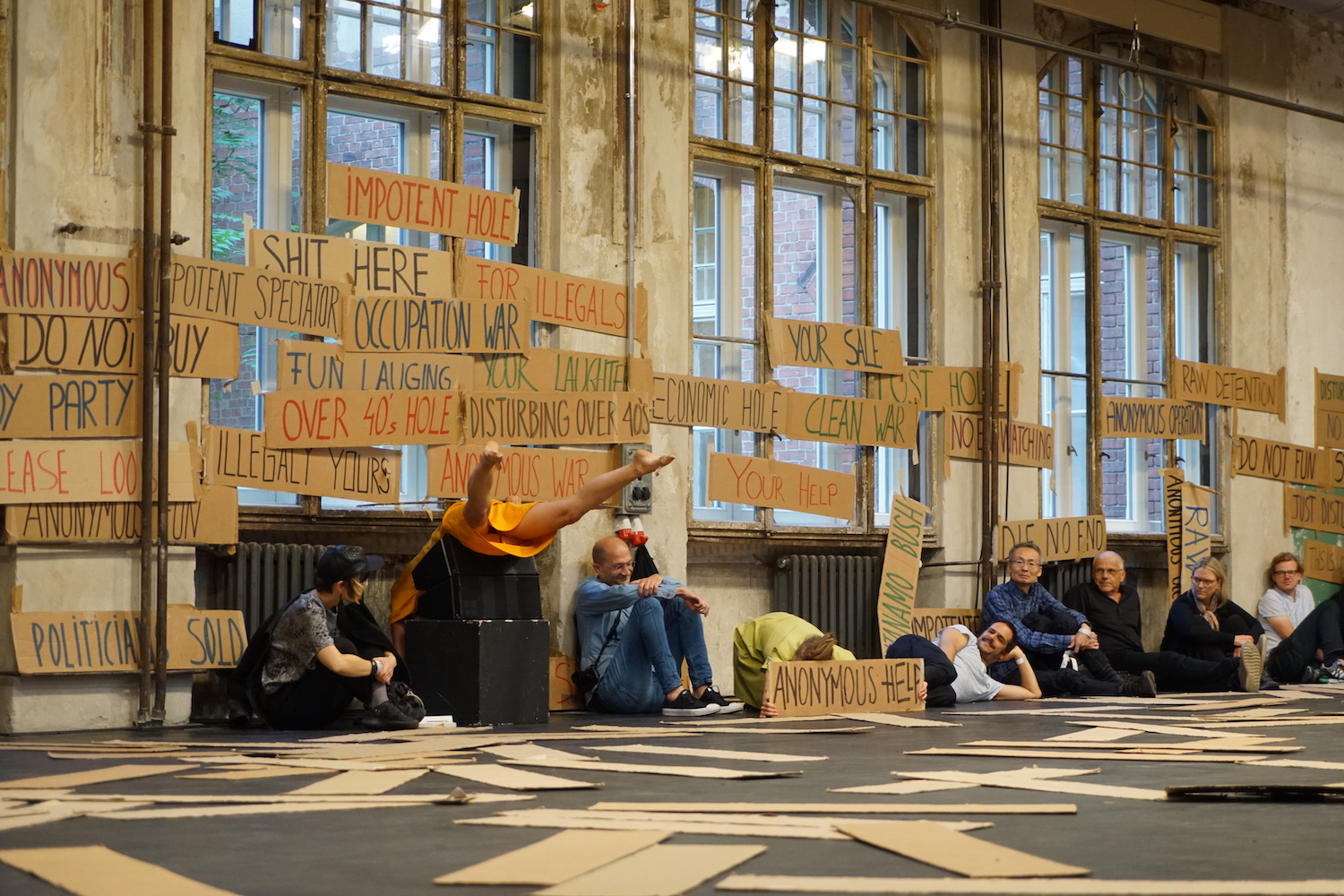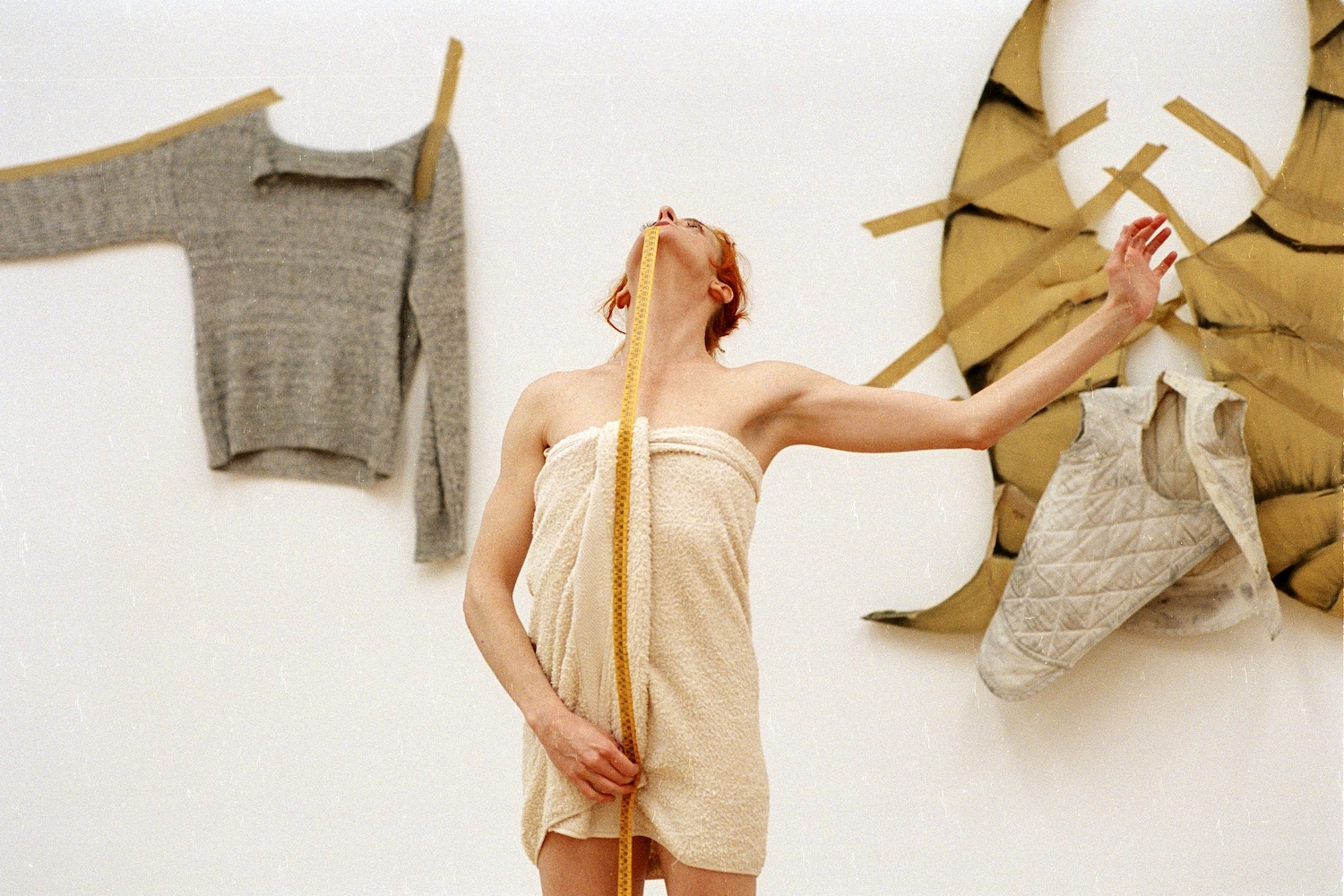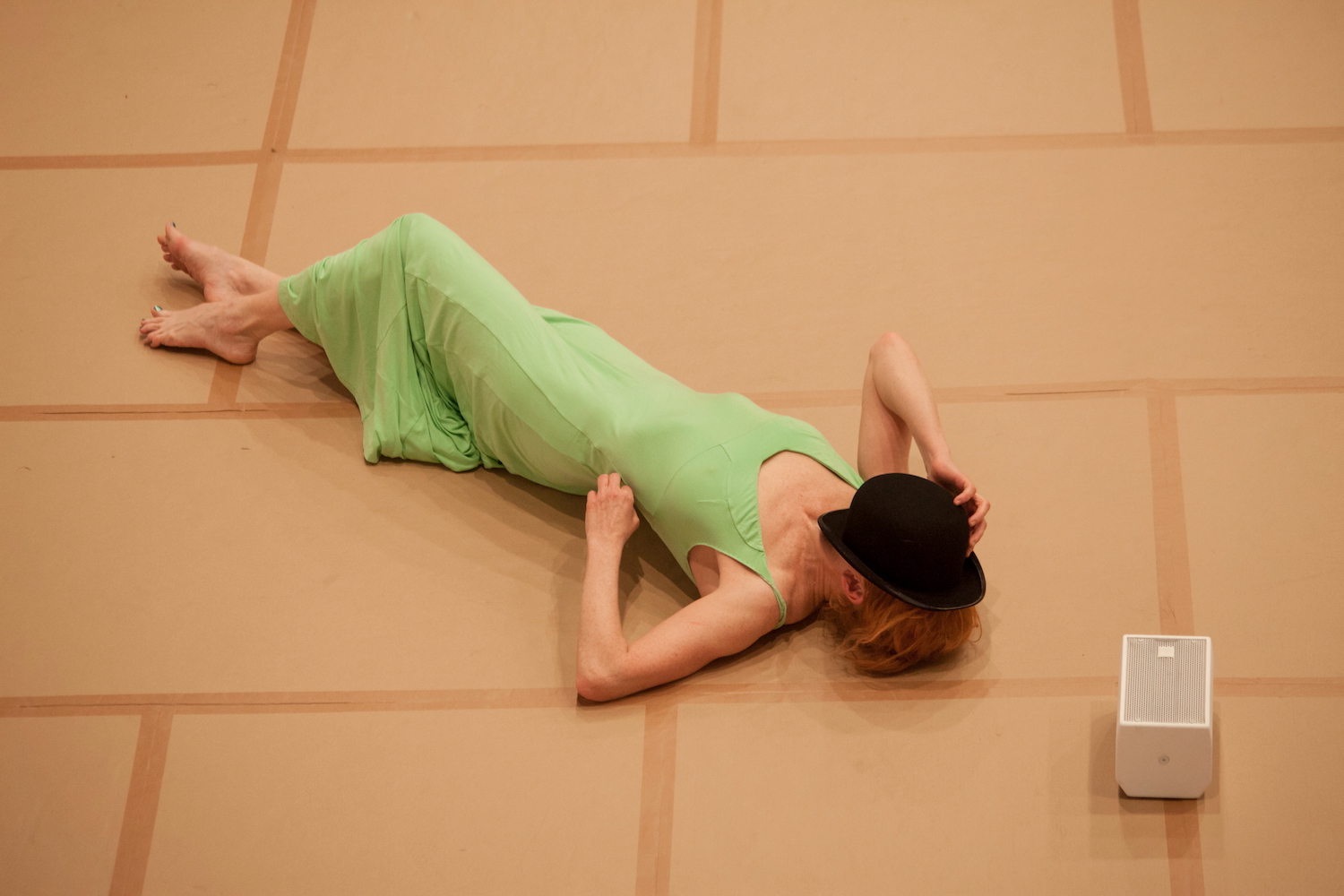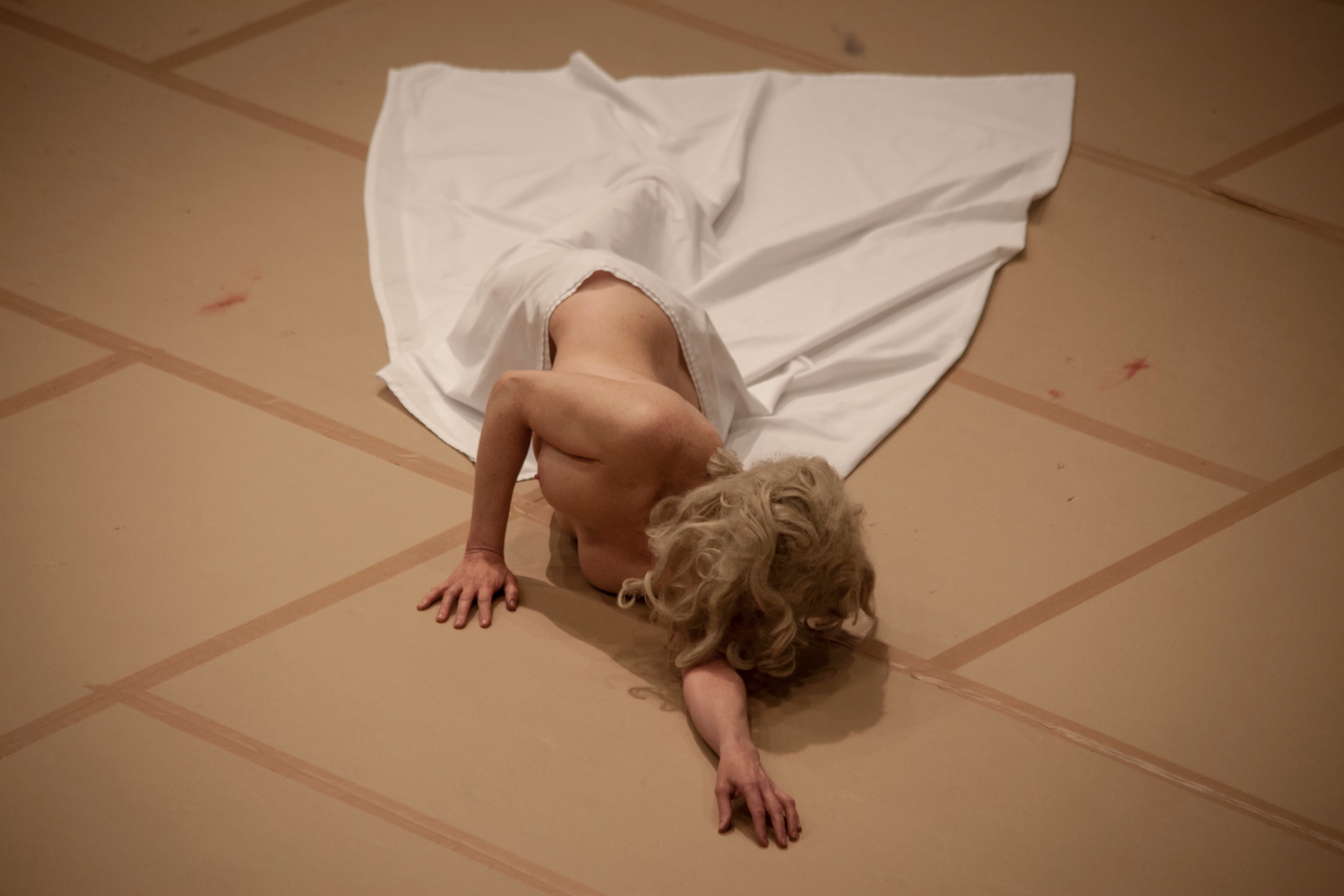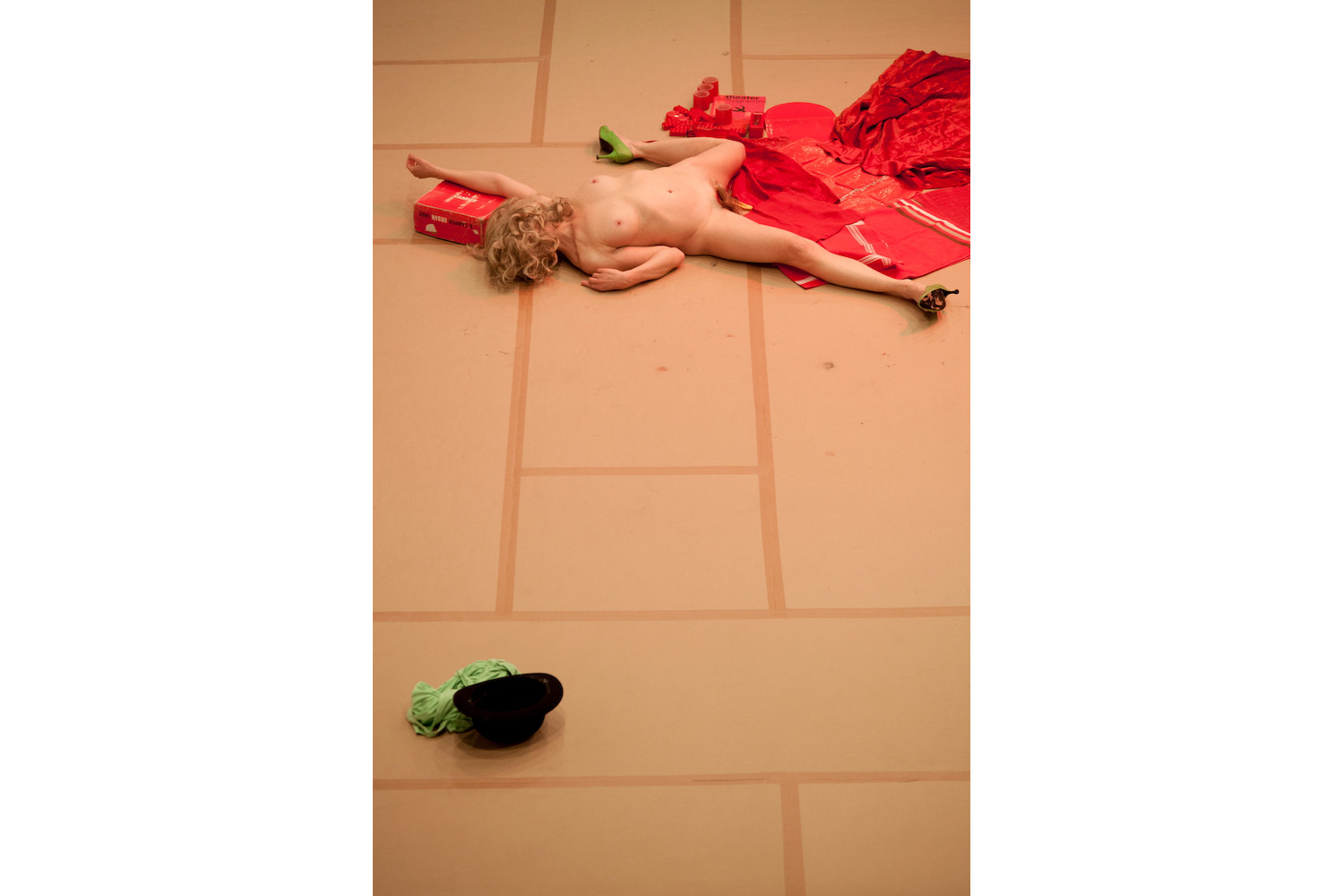Dance Office is a column dedicated to contemporary dance and performance art.

Spanish choreographer La Ribot, recipient of the 2020 Venice Dance Biennale Golden Lion for Lifetime Achievement, has created a body of work that is, above all, extremely entertaining. Watch any random performance of hers and you can’t avoid smiling or laughing. Yet the work is rigorous. Her ongoing influence on the evolution of contemporary dance, particularly on some of its most complex problematics, is significant. One of her more groundbreaking contributions has been finding ways to integrate dance into the curatorial practices of museums, which many institutions are still struggling to do.
Consider her most iconic work, the “Distinguished Pieces” series. Presented for the first time in 1993, this series of micro solos made her a familiar presence within the contemporary art world, bringing the tension between dance, performance, and visual art to the fore. Here, the performer, in a very comedic and surrealist way, uses her primary material, the body, to create a compelling series of linked narratives addressing situations on the edge of the known and the unknown, the domestic and the ethereal. The result is quite mesmerizing. Moreover, the artist manages to find a solution to the endless question of the monetary value of a performance within the art market. Indeed, each piece can be bought as an ephemeral art object, thus making it a “Distinguished Piece” owned by a “Distinguished Proprietor.” With the purchase, the name of the owner is linked forever to the title and life of the piece purchased. The choreographer therefore manages to sell her pieces, but she does it with a gesture that is semantic and poetic, only loosely based on economic considerations. Curiously enough, the result is quite incestuously ironic, as it turns out that the vast majority of the owners are dancers as well. To date, approximately fifty such pieces have been realized, for a total duration of about seven hours. The artist’s seeming goal is to create at least one hundred pieces belonging to the same overarching narrative, which will expand throughout her lifetime.
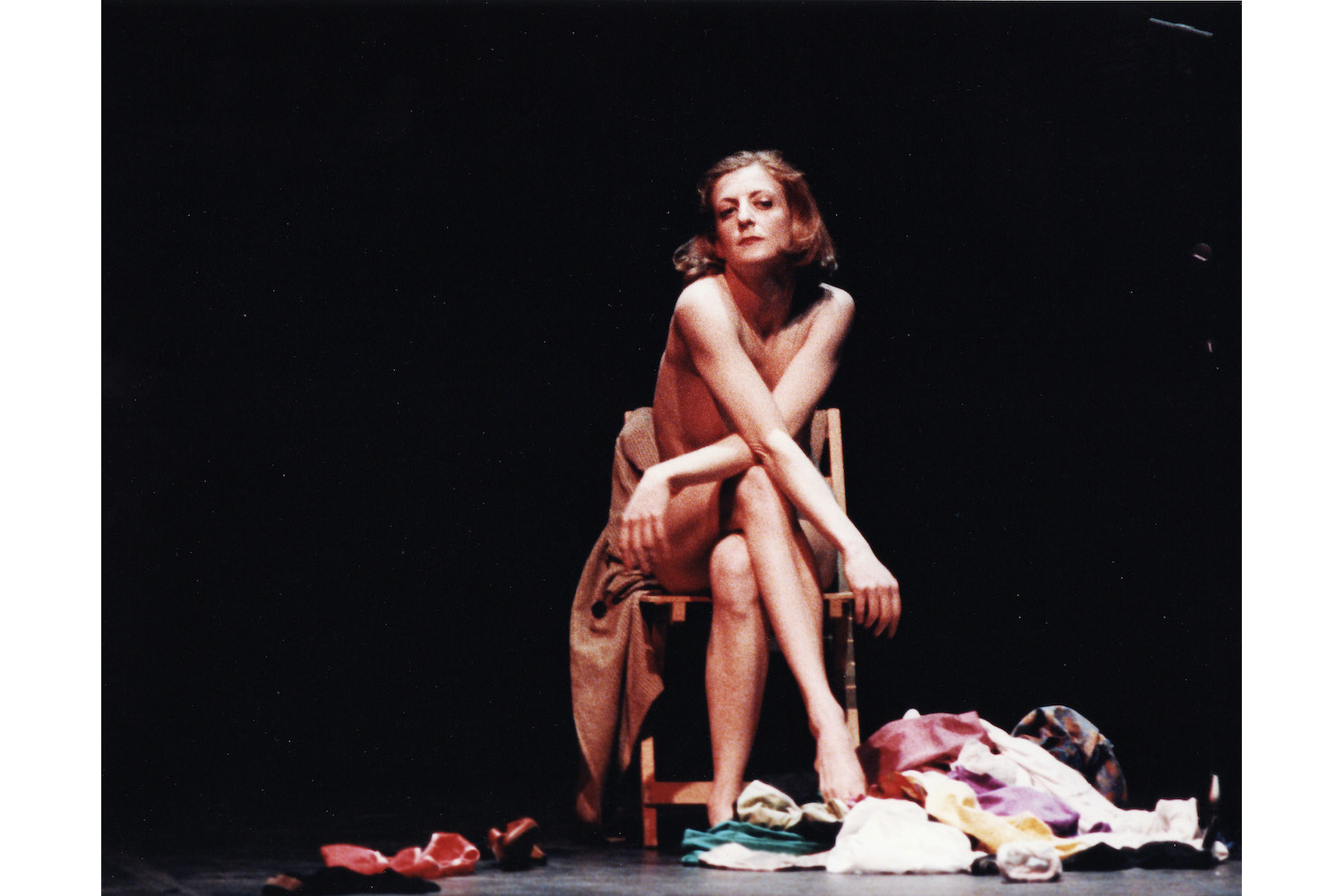
La Ribot’s presence on stage suggests that her natural propensity is to entertain and to avoid spectator boredom. Yet avoiding tediousness is not a goal in itself; it is merely the result of her physical and mental prowess, the likes of which can only be found among masters of comedy. Her stage name, for instance, is already a bold statement. It is a self-inflicted baptism that creates, ex novo, a stage persona in reference to previous pop culture divas: just as there was La Carmen and La Callas, there is now La Ribot. Her first performance using her new stage name was in 1991. Called Socorro! Gloria!, the work is a clever and funny seven-minute-long striptease accompanied by a Beethoven piano sonata. Already a strong political statement, the work places her within a lineage of female choreographers who interpret their own solos, as exemplified by Mary Wigman, Isadora Duncan, Loie Fuller, and Pina Bausch. Whether surrounded by silence, classic music, or by Anna Oxa singing “Fatelo con me,” La Ribot introduces herself alone on stage as a powerful woman, a daily superhero, whose body, although quite similar to ours, is able to evoke poetic dimensions that allow viewers to briefly forget how difficult, sad, and pointless is to be a human being.
Since the early 1990s, La Ribot has created her own language informed by visual art while applying collage and cut-and-paste strategies using the body, objects, and extravagant costumes in continuously choreographed movement. Just as in the aforementioned “Distinguished Pieces,” all her pieces are linked, as if each were an element of a lifelong haiku aimed at creating a kind of condensed, career-spanning poem. Be it a solo piece, a group piece using local extras, or a video, La Ribot dances almost exclusively surrounded by other female dancers, reinforcing an onstage communitarian identity based on independence and solidarity
While observing her at work, on stage or in the white cube of a museum, our gaze operates like a camera. It regularly pans in and out of the action, following the dancer who leads us into a narrative based on micro and macro objects. If there is a close-up, it’s not our choice, but a carefully crafted proposal by the choreographer who shifts her action onto a specific detail, revealing unexpected elements of her anatomy, the objects she uses, the many layers she wears, or the spaces she so cleverly uses. Exploiting this kind of cinematographic technique while performing on stage is extremely difficult. And yet it is what we receive as viewers, sometimes almost subliminally, because we simply and naturally navigate among these elements guided by the gentle hand of the artist.
La Ribot’s work moves back and forth between bodies and materiality, between theater and exhibition spaces. Her six-hour-long performance Laughing Hole from 2006 featured three dancers playing with cardboard signs covered with politically charged words. It was a time when torture at Abu Ghraib was in the news and everyone was talking about the war. On the verge of a nervous breakdown, the three constantly laughing and dancing women literally carried these heavy words like the burden of our failing humanity.
Considering that this choreographic body of work began in the 1990s in Madrid (today there are more than thirty creations), one undeniable commonality among the characteristics of La Ribot’s visual and choreographic language is its consistent dissimilarity from that of the vast majority of her peers. This has kept her distant from any sort of mainstream center, always proudly free, thriving exclusively on the periphery. A curious example of her artistic consistency is embodied by the legendary “Desviaciones” festival that she organized in collaboration with Blanca Calvo in Madrid, between 1997 and 2001. For five years they brought together the most innovative interpreters and thinkers in the field; the festival featured everything that was not yet deemed presentable elsewhere, representing a vision for dance and performance that was not yet tolerated by most venues. Thanks to the festival, Olga Mesa, Juan Dominguez, Gilles Jobin, Claudia Triozzi, Jerôme Bel, Marco Berrettini, Xavier Le Roy, Myriam Gourfink, Christian Rizzo, and Raimund Hoghe, among others, were able to present their ideas and work, and it is no coincidence that these names, twenty years later, are still among the pillars of innovation in the field. What might have been bizarre or simply unusual at that time was nothing other than a brand-new approach to dance and performance.
Taking the word desviaciones [deviations] as a guiding principle throughout her career, La Ribot has shared her mighty and poetic presence on stage, pursuing the same project over and over: dancing her humanity.

